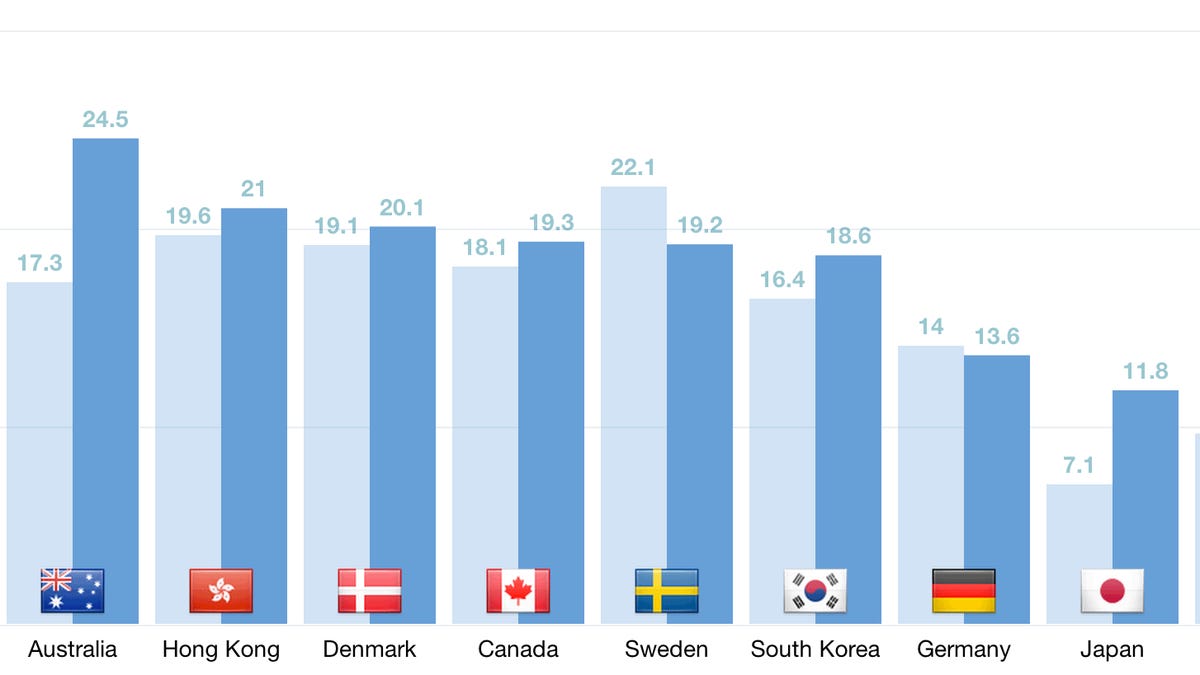Report: LTE speeds drop in US over the last year
Download rates dropped 32 percent in the United States, according to data from 6 million people using OpenSignal's network-monitoring app. 4G looks better in South Korea, Japan, Sweden.

The download speeds of 4G LTE networks dropped in the US over the last year, according to measurements from network monitoring app OpenSignal.
In the February 2014 report, the United States ranked 15th of 16 countries for download speeds, losing ground as the average data rate dropped to 6.5Mbps from 9.6 megabits per second in the February 2013 report.
Of the country's major network operators, T-Mobile had the best data rate, at 11.2Mbps. AT&T rated 8.9Mbps, Verizon 7.6Mbps, and Sprint 4.2Mbps. However, Verizon, followed by AT&T, rated much better for coverage.
"The USA networks uniformly perform poorly for speed," OpenSignal concluded in the report, released on the eve of Mobile World Congress.
High-ranking countries include Australia, with an average download speed of 24.5Mbps; Japan, whose speeds increased 66 percent over the last year to 11.8Mbps; South Korea, which boasts 91 percent LTE coverage for its mobile subscribers.
OpenSignal gathers data from 6 million people who use its app to monitor coverage. Data for the latest report was gathered in the second half of 2013.
LTE is a big deal for carriers. Customers like it, but it's an expensive upgrade to network hardware.
Germany and Sweden also saw download rates decline. "Mobile networks do not remain constant, with operators constantly rolling out to new areas and making improvements to their network. On the other side of the coin, increased users combat these improvements, as increased network load brings down average speeds. This is the reason that some countries have improved since our last report a year ago, while others have worsened," OpenSignal said.
A total of 76 countries now have LTE somewhere, the report said, with 18 more planning to add it, the report said.

